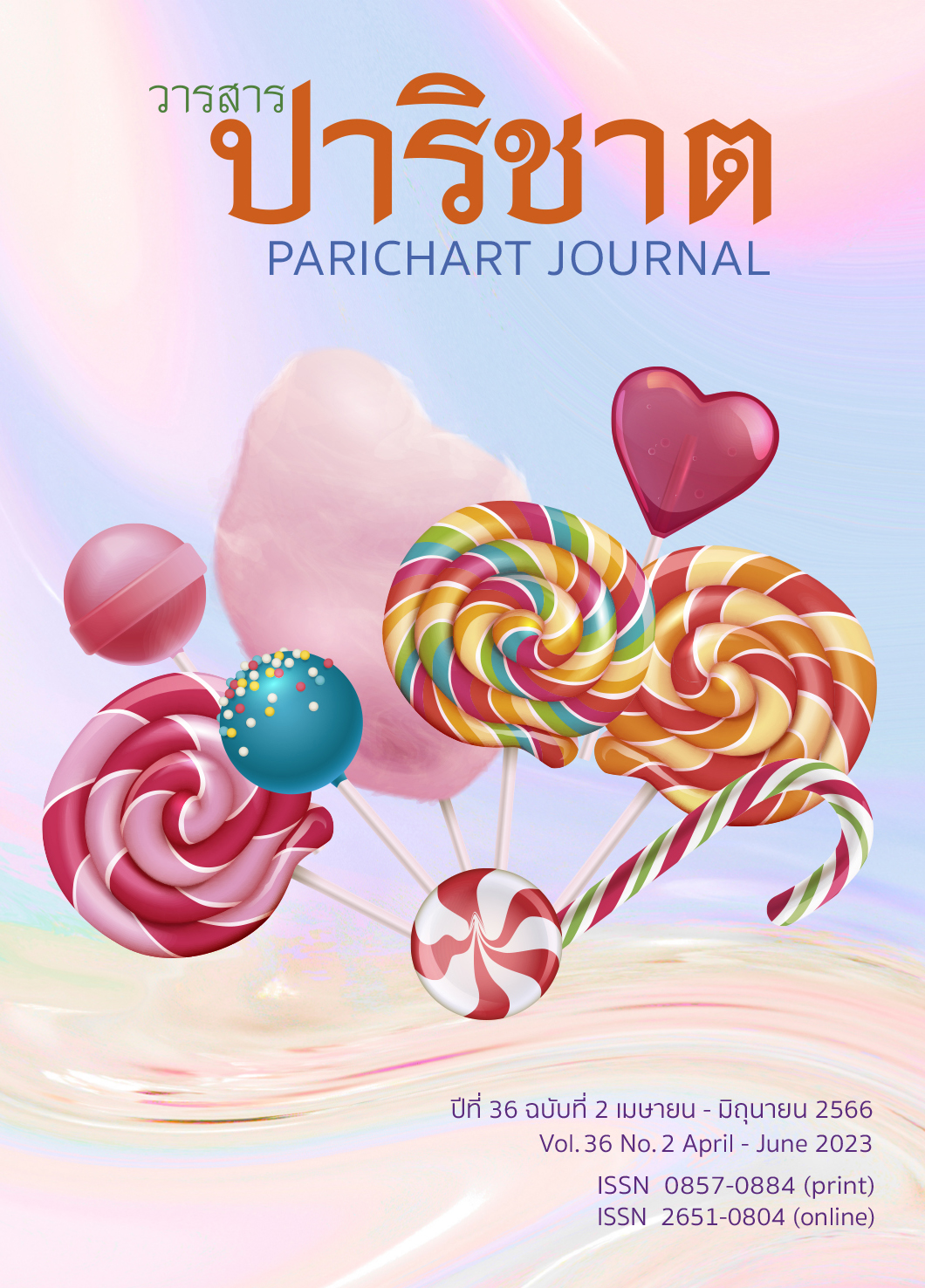From Ritual of Bad Luck Removing to Sustainably Driving Community’s Economy: A Case Study of Bantoon Subdistrict, Muang District, Phayao Province
Main Article Content
Abstract
This study aims to examine the lessons learnt from the ritual of bad luck removing at Bantoon Subdistrict, Muang District, Phayao Province, to develop the forms of model products under the name “Boon Thung Set”, to investigate the financial potential, and to evaluate the values of community’s economy. The study employed participatory action research (PAR). Twenty participants, including community leaders and community’s cultural product producers, were recruited through purposive sampling. The findings revealed that the development of ritual and its implementation to the cultural product design comprised the following 3 themes: removing bad luck ritual as a traditional tradition valued by Lanna people, materials and food used for manufacturing products, and ritual and pray chanting in the form of QR code. The researchers used the derived themes to produce a cultural product, adjusting it to match the community’s needs as well as the customers’ needs. The analysis of economic and cost-benefit, it was found that the products “Boon Thung Set” could generate more incomes to the community with the average annual income of 9,832 baht (8.24%) for each household. Regarding the analysis of capital and benefits, it was found the financial value, taking 2 months as a payback period. The significance of this study could be that the concepts on the ritual or the cultural capital can be used for economic development. In other words, these can be used for developing tangible cultural products. It can further be used as a guide for developing the community’s economy in the future.
Article Details

This work is licensed under a Creative Commons Attribution-NonCommercial-NoDerivatives 4.0 International License.
References
Wasi, P. (1993). Local wisdom and countryside development I. Amarin Printing Group. (In Thai)
Kaewthep, K. (2000). Media science and cultural study. Edison Press Product Ltd. (In Thai)
Kaewthep, K. (2008). Introduction to community communication management. Pabpim 11. (In Thai)
Yammai, S. (2021) Tiny hunter's face and tiny headdress: Cultural capital development to cultural products. Journal of Humanities and Social Sciences, 13(1), 85-111. (In Thai)
Thappan, Y. (2000). Economics project valuation. Thammasart Press. (In Thai)
Chompan, P. (2019). Cost benefit analysis for evaluate the investment management of his Thai majesty’s ship Lanta local museum. Journal of Education Studies, 47(1), 212-235. (In Thai)
Makphan, W., Chumsri, F., & Oumpet, O. (2017). Economic value of local vegetables in Ban Pha Yang community, Tha Ngio Subdistrict, Muang District, Nakhon Sri Thammarat Province. Thaksin Journal, 20(1), 29-38. (In Thai)
Amatayakul, S., Apichatvullop, Y., & Chamaratana, L. (2016, November 14-15). Consumption of Phi Ta Khon cultural products [Paper Presentation]. 12th International Conference on Humanities & Social Sciences 2016, Khon Kaen University, Thailand. (In Thai)


